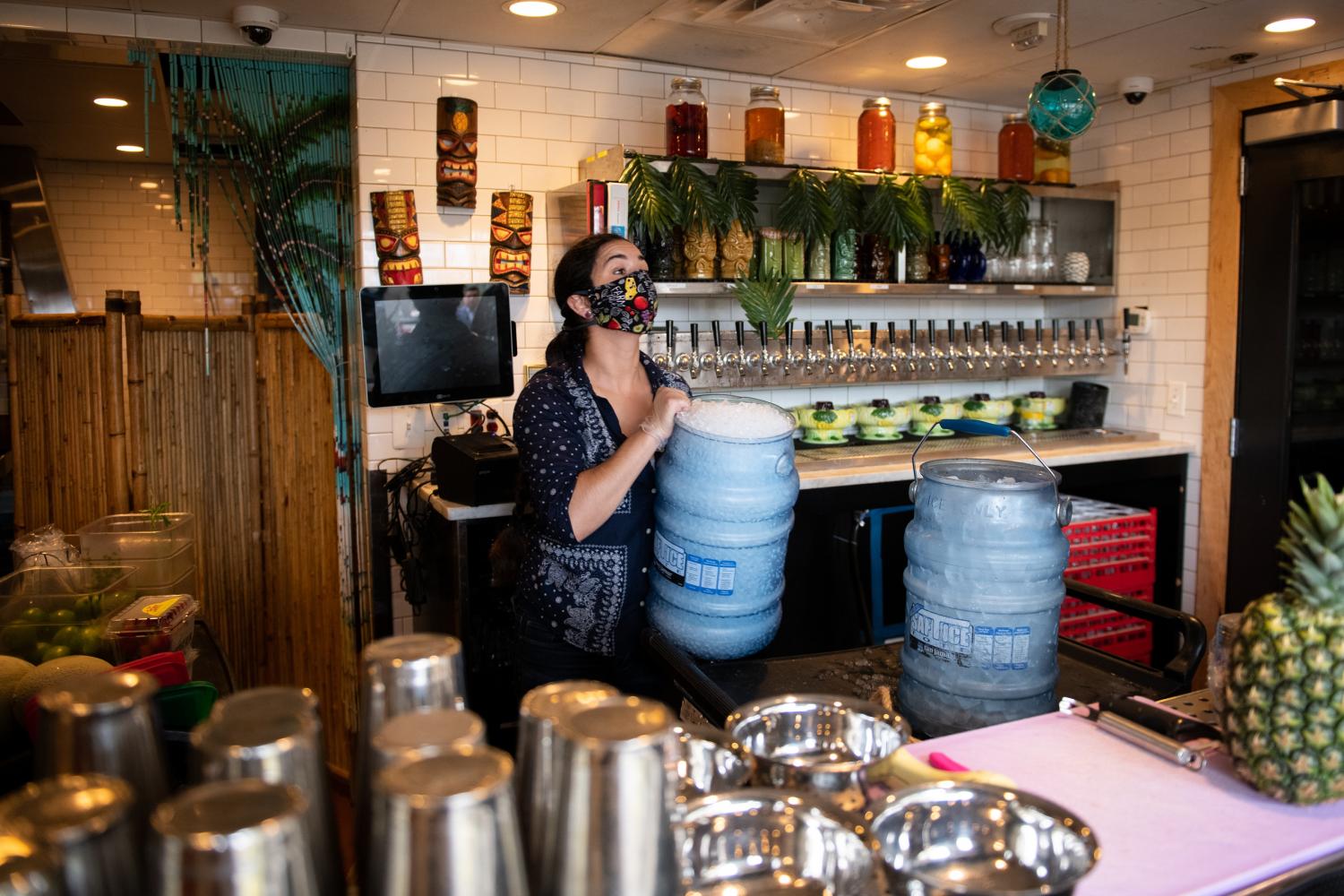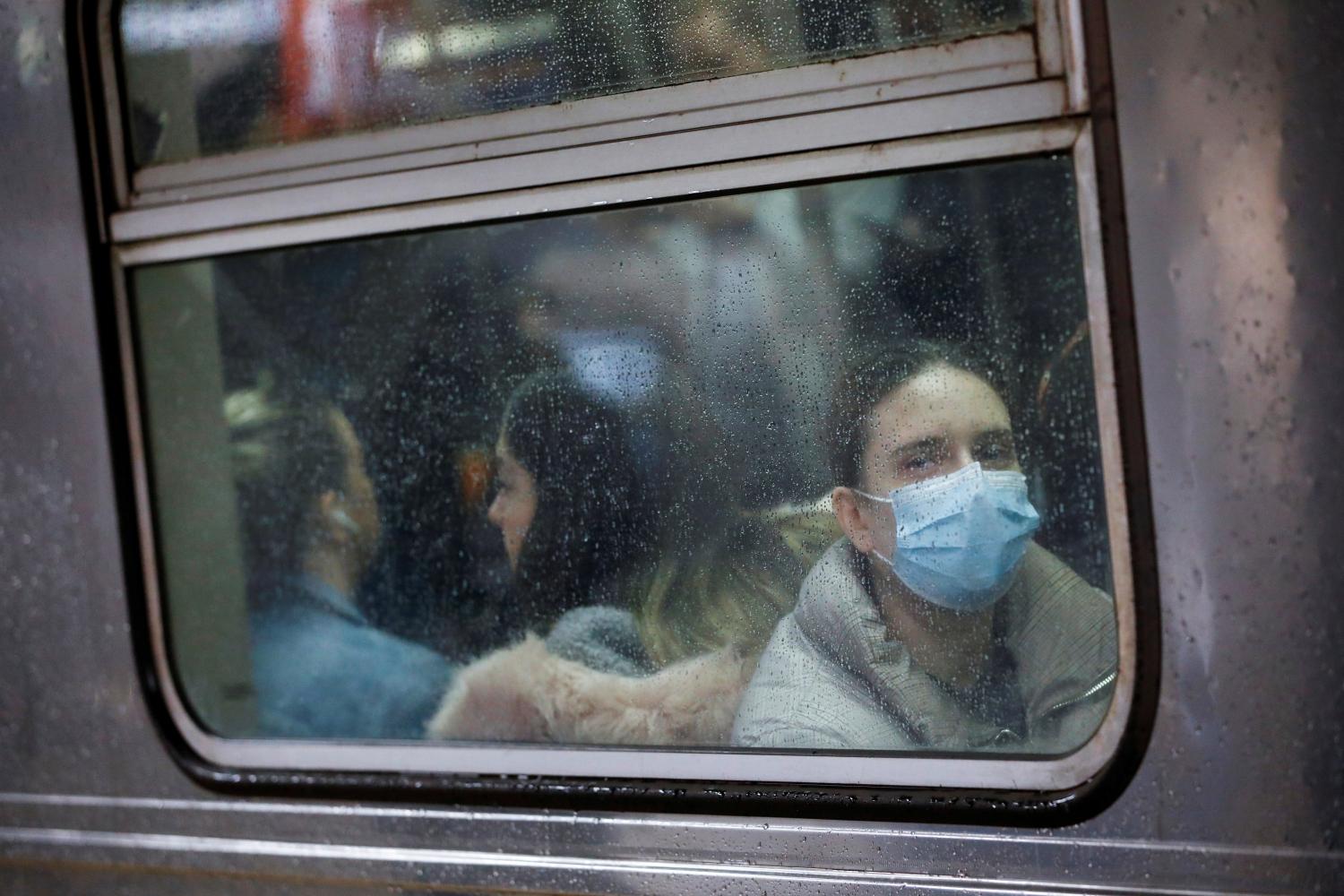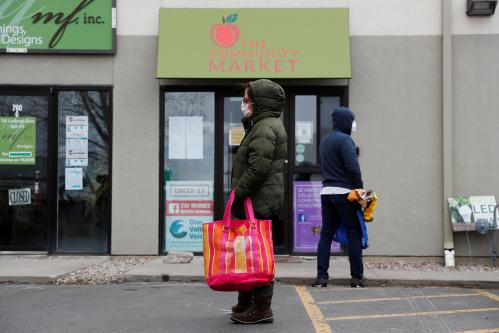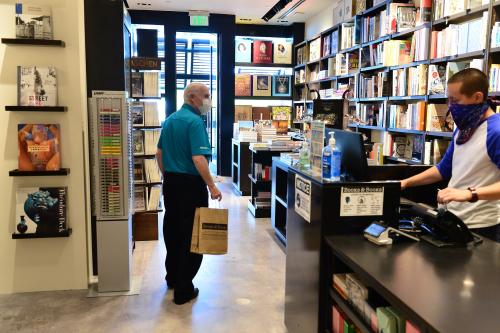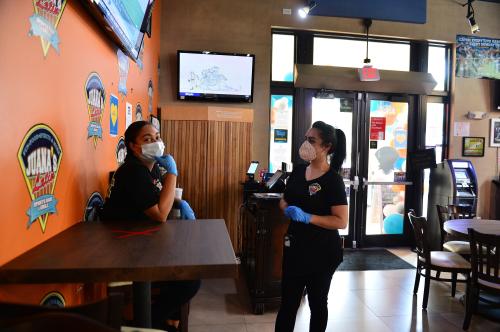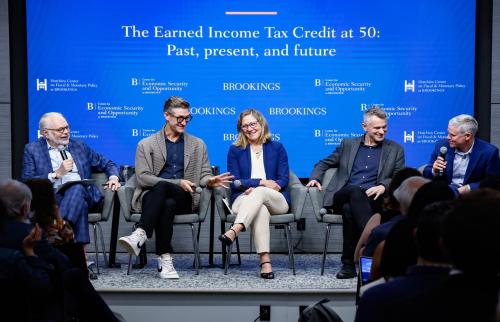Congress’s major COVID-19 relief program for small businesses, the Paycheck Protection Program (PPP), has so far distributed 5 million loans across the country. That distribution, however, has not been equal. Newly released data offers a comprehensive snapshot of how access to PPP loans varied considerably based on neighborhood demographics, with small businesses in majority-white neighborhoods receiving PPP loans more quickly than small businesses in majority-Black and majority-Latino or Hispanic neighborhoods.
A ‘Herculean’ response with a painful execution
The equation for the COVID-19-induced small business crisis has been troubling but simple. Starting in March, millions of small businesses stopped generating revenue, but still had payroll and other fixed costs (utilities, rent, debt payments, etc.). These businesses needed new sources of immediate liquidity, and Congress designed the PPP to cover their labor costs for 10 weeks. The goal was to avoid a historic wave of small business closures that could tear apart the fabric of the economy.
With this urgency, Congress built on the principles of the Small Business Administration’s existing 7(a) loan guarantee program to distribute loans through certified lenders (banks, credit unions, CDFIs, and, eventually, financial technology companies and non-bank lenders). SBA removed the majority of the 7(a) program’s rules—requiring no fees, no credit scores, and no collateral from applicants. This enabled the financial system to move a historic amount of capital in a very short period.
Implementation challenges were immediate. At a Brookings event in April, then KeyBank CEO Beth Mooney characterized the PPP as a “Herculean” public-private response whose “execution was very painful.” She reported that KeyBank, the nation’s ninth-largest SBA lender, typically does about 600 SBA 7(a) loans annually, or about 50 per month. But in the first half of April alone, they issued 37,000 loans. Mooney acknowledged that KeyBank’s initial outreach was to its existing customers, which means that unbanked or underbanked small businesses were not included in that first push.
The PPP also revealed capital access challenges for some small businesses due to broader shifts in the small business lending market. Over the past couple decades, large banks have been less likely to operate in the small-loan space due to low profit margins, and small banks that traditionally served local small businesses have declined due to a wave of bank consolidations since the financial crisis.
This has a disparate impact at the neighborhood level. According to the Institute for Local Self-Reliance, since 2006, communities of color have lost more small community banks than other communities. Online lenders have stepped up to fill the gap with internet-based technologies that allow for more efficient loan processing and lower transaction costs, albeit with higher interest rates. But those online lenders were not made eligible to issue PPP loans until April 14, two days before the first round of PPP funds was depleted. At the same time, independent contractors and self-employed individuals (business owners who do not have employees) were not eligible for PPP loans until April 10.
Understanding these shifts in the small business lending landscape is critical to understanding what happened next.
Neighborhoods of color with the most cash-constrained small businesses received PPP loans last
The PPP initially relied on traditional banks to deliver loans, which favored existing customers at large banks and disfavored microbusinesses (businesses with fewer than 10 employees), non-employer businesses, and Black- and Latino- or Hispanic-owned businesses (which all tend to be unbanked or underbanked). This disparate access has been hard to measure directly because PPP loan-level data provided by the Treasury Department does not consistently report the race and ethnicity of the loan recipient. However, the database does provide the ZIP code, loan approval date, and lender for over 5 million borrowers, creating an comprehensive picture of small business capital access at the neighborhood scale.
While we do not have data on business owners themselves, neighborhood racial composition can be a useful angle to investigate the PPP’s reach, as previous research finds that the racial and ethnic composition of a neighborhood is related to small businesses’ liquidity and profitability. Prior to the COVID-19 pandemic, the JPMorgan Chase Institute found that businesses in communities of color were the most cash-constrained but the least likely to have existing relationships with large banks.
Our analysis of Treasury’s data shows how this precondition systematically delayed access to PPP loans in majority-minority neighborhoods. On average, it took 31 days for small businesses with paid employees in majority-Black ZIP codes to receive PPP loans—seven days longer than those in majority-white communities (Chart 1). For non-employer businesses, the loan delay between majority-Black and majority-white neighborhoods grew to nearly three weeks. This delay is particularly acute because, according to the JPMorgan Chase Institute, in at least 90% of all majority-Black and majority-Latino or Hispanic neighborhoods, a majority of small businesses have cash buffers of less than three weeks, compared to only 35% of majority-white neighborhoods.
Beyond the preexisting disparate access to banking, a matched-pair test conducted in April found that Black business owners were more likely to be denied PPP loans compared to white business owners with similar application profiles due to outright lending discrimination.
Online lenders served large shares of sole proprietors in communities of color
With less access to large banks, many unbanked or underbanked non-employer businesses turned to other types of financial institutions (Chart 2). In majority-Black neighborhoods, for instance, financial technology companies (“fintechs”) and online lending companies issued nearly 80% of loans for non-employer small businesses. This is consistent with the Federal Reserve’s 2020 Small Business Credit Survey conclusion that online lenders were the main source of credit for Black-owned small businesses, while other small businesses mainly drew financing from large banks. Importantly, fintechs and many other online lending companies were not allowed to distribute PPP loans until April 14, after the first round of funding was almost depleted—further contributing to the delay in capital access for many small businesses.
Notably, the relationship between lending source and neighborhood demographics takes on a different pattern for small businesses with paid employees. Large and medium-sized banks accounted for about half of loans in majority-white, majority-Black, and majority-Latino or Hispanic neighborhoods, and over 60% of loans in majority-Asian American neighborhoods. Small banks and credit unions played a larger role in majority-white neighborhoods, accounting for more than 40% of loans. Community development financial institutions (CDFIs), meanwhile, accounted for about 6% of loans for small employer businesses in majority-Black neighborhoods, the highest among all demographic groups.
How the PPP came to ground in Washington, D.C.
The national trends related to capital access come into sharper relief at the local level. In Washington, D.C., for example, PPP loan receipt dates follow a clear racial and spatial pattern. Small businesses in majority-Black neighborhoods, including those south and east of the Anacostia River, waited 37 days for their PPP assistance on average—10 days longer than small businesses in majority-white neighborhoods (Chart 3A). Small businesses in majority-Black neighborhoods were also more likely to apply for their loans from fintechs or online lenders (Chart 3B), with the top three PPP lenders being Bank of America (13%), Kabbage (9%), and Celtic Bank (8%). Kabbage is an online lender, and Celtic Bank is the actual lender behind fintechs such as Square and OnDeck.
Even beyond their delayed eligibility to issue PPP loans, the distinction between traditional banks and fintechs is important. At one level, it provides a useful look at what type of lenders serve different communities. In this time of crisis, new research evaluating the PPP suggests that fintechs filled gaps not met by traditional lenders, and thus actually expanded access to PPP loans for very small businesses that were unbanked or underbanked. Because the PPP’s repayment and loan forgiveness terms are the same for banks and online lenders, this was helpful for those businesses.
But there are downsides to an overreliance on fintechs. The Federal Reserve found that online lenders have less favorable interest rate and repayment terms compared to traditional banks. And many online lenders remain largely unregulated, leaving borrowers without sufficient consumer protection.

We must commit to evening the entrepreneurial playing field
With nearly 70% of businesses expecting that it will take at least four months for their operations to return to normal, Congress returns this week with an urgent need to issue a third round of PPP relief. With established rules and regulations from the federal government as well as preexisting relationships between lenders and borrowers, the hope would be that round three of the PPP would work more smoothly and inclusively than rounds one and two. To respond to some of the challenges discussed in this analysis, the SBA has launched new products such as the Community Advantage Recovery Loan, which targets small businesses in underserved communities with capital and technical assistance.
The longer-term work of equalizing access to business ownership—and the capital it requires—will require both policy change and new norms within corporate America. If this summer is any indication, those shifts are underway. In wake of nationwide protests for racial justice, corporate investment in CDFI funds, procurement reform, and social responsibility initiatives that support minority-owned businesses totaled more than $1 billion. Democratic presidential candidate Joe Biden has a plan to help support entrepreneurs of color, including changing federal procurement policies, and mayors are pledging greater transparency on procurement as well. Meanwhile, entrepreneurship ecosystem builders like our colleague Rodney Sampson are proposing tens of billions of dollars in new, more racially inclusive federal investments in digital skills, entrepreneurship, and capital investment.
There is a clear rationale behind these efforts. The racial wealth gap in the U.S. is large and persistent, and it stands to reason that enhanced resources and policy changes that close entrepreneurship gaps could help close wealth gaps in communities of color. But to be effective, these new efforts must also understand how the small business lending market has shifted and will continue to shift, especially the neighborhood-level dynamics that this analysis outlines. Providing targeted help to small businesses in underserved communities would create not only a more prosperous economy, but a more just one as well.
Method notes:
We first match the lenders in the SBA Paycheck Protection Program Loan Level Data to FFIEC call reports, certified CDFIs lists, and SBA-participating fintech companies, using the lender names provided. We define large banks as those with at least $50 billion in assets; small banks are those with less than $10 billion in assets; medium banks are those in between. Using this method, we were able to identify 91% of the lenders in the database. For the remaining 9% unmatched institutions, we treat lenders as non-bank lending companies if the name contains “llc,” “ltd.,” or “inc.” rather than “bank.” Note that some fintech loans are issued by a partner bank, and are listed as “banks” in the PPP data. For example, PayPal loans are issued by WebBank, so loans applied through PayPal list “WebBank” as the actual lender. For the purpose of this analysis, we identified the major fintech bank partners (Cross River Bank, Celtic Bank, and WebBank) and categorized them as fintechs.
The Brookings Institution is committed to quality, independence, and impact.
We are supported by a diverse array of funders. In line with our values and policies, each Brookings publication represents the sole views of its author(s).


